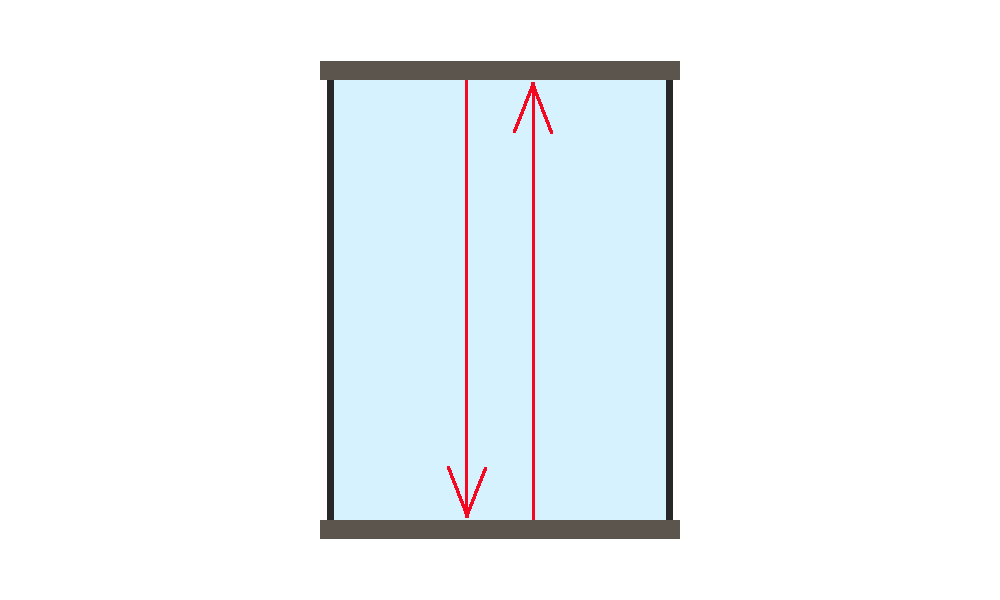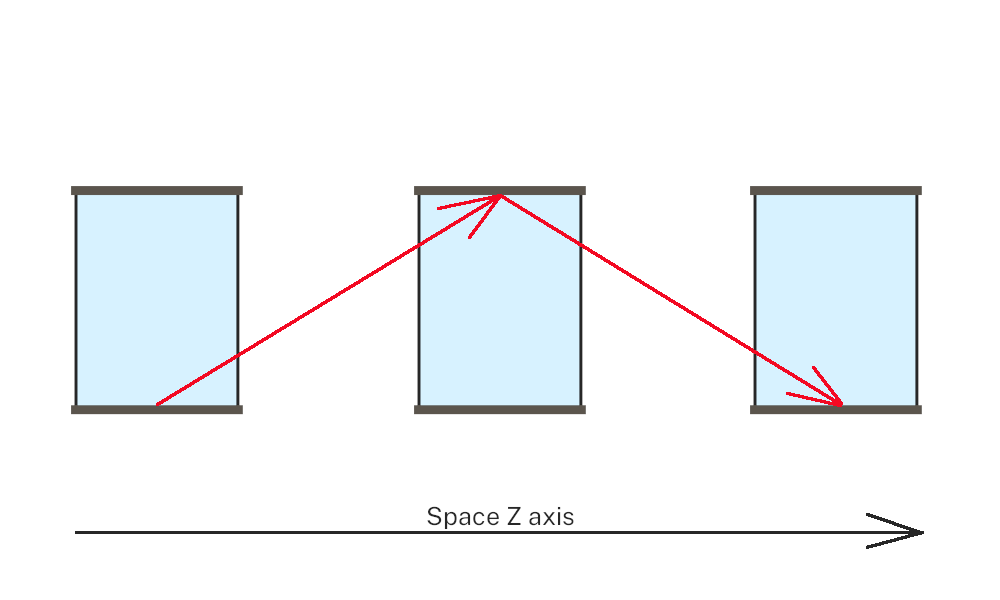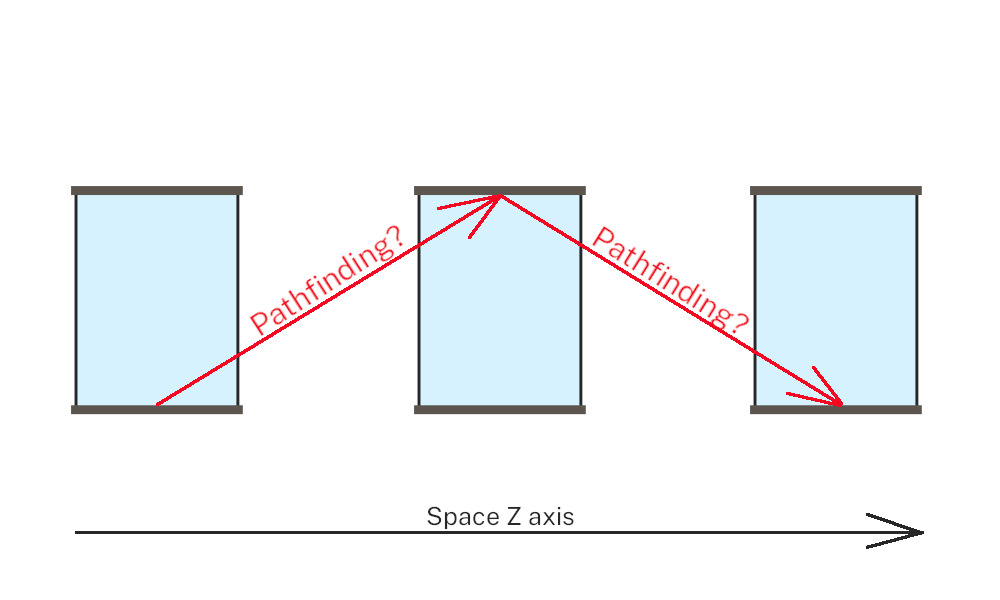marcus-s.de |
Let us assume we have a starship capable of approaching the speed of light, and now let's further assume that this starship is currently being propelled by this engine at top velocity. Inside the fuselage you are in there as the pilot, and behind your pilot seat, you have a glass container with a mirror at the top and bottom, like so:

Inside the container there is a beam of light constantly being reflected from the top and bottom mirrors, thus being reflected infintely inside that container. When you as the pilot look at the container, you would see nothing out of the ordinary: a straight line inside which the beam goes back and forth.
As the ship is not standing still and being propelled on, let's assume, a straight line through space, the path the light beam inside the container looks very different from an outside perspective. It will be more of a zig-zag line in absolute measurement:

While, logically, this does make sense, this observation brings forward a question, or rather, a paradox, which - in my opinion - is unsolvable, and by extension unanswerable, without deeper understanding of the nature and/or the fabric of the universe itself.
The paradoxical question lies within the movement of the photons of the beam of light in an absolute coordinate system of three dimensional space. This does not account for time dilation and spacetime contraction effects.
The question can be simplified like this:
Why do the photons, once they hit either one mirror surface, move toward the next exact absolute point in space where they need to arrive at so that they make it to the exact point where the mirror will be?

Consider an extended scenario at which the spaceship needs to take a sharp turn to evade an asteroid or some other obstacle - now the next destination point of the mirror is not on the projected straight line, but somewhere else completely. Yet, the photons will arrive at that exact point.
There are two assumptions that would effectively resolve the paradox stated above, but would unearth more questions about the nature of reality and the fabric of the universe itself.
1) All events, every single movement of every atom and body in the universe, is pre-determined (much like a one-directional movie). The photon particles, or in other words, all particles in the universe, would not move at all, but simply being transferred to the next position as it is seen in the next "frame".
2) The universe itself is a simulation running in a fenced or even sandboxed environment. The mechanisms of such simulation could pre-render the next events and then transfer this information into the running simulation - thus solving the future problem of pathfinding for the photons (and all other particles in the universe). This does not mean everything is pre-determined as in solution 1 - but does solve the issue of "knowing" where to go next in an absolute coordinate system where conditions may change rapidly. Such as a sudden course correction of the vessel.
|